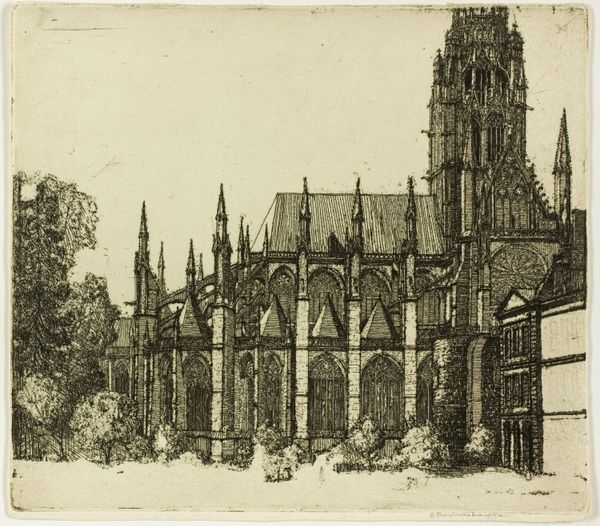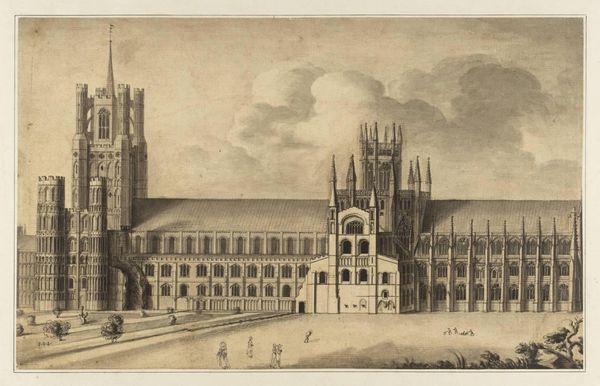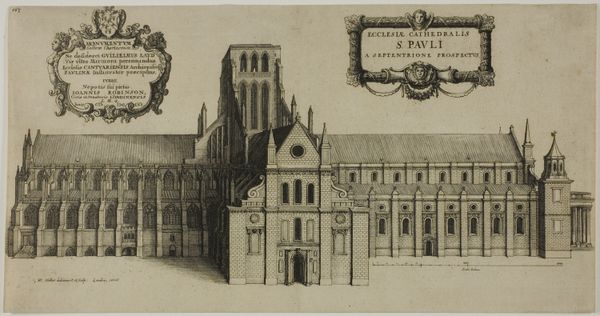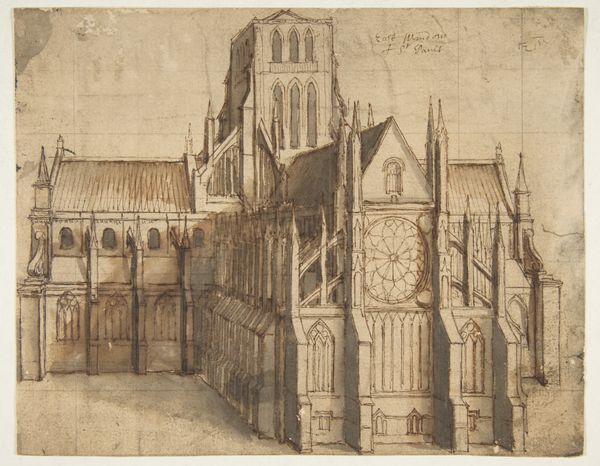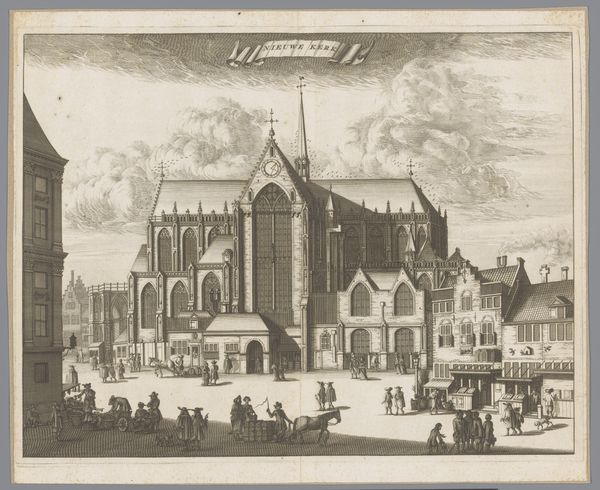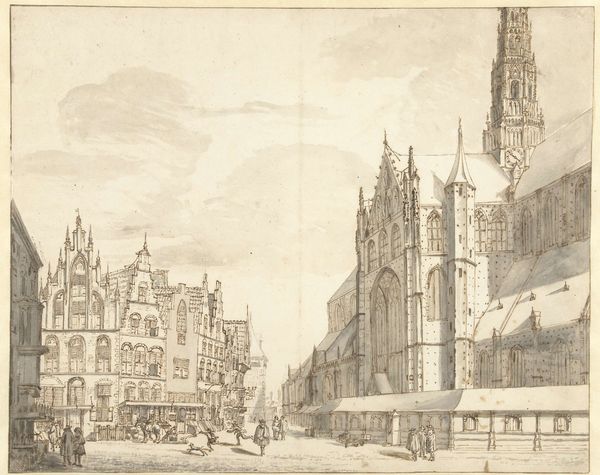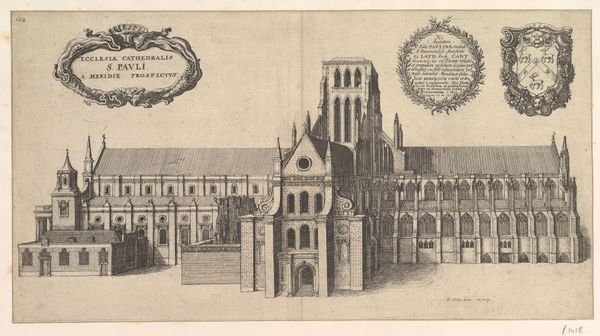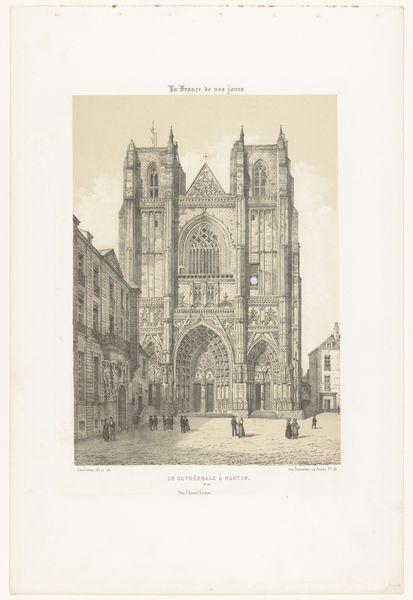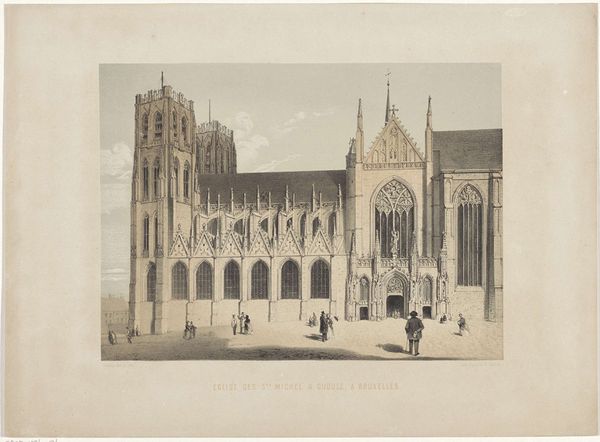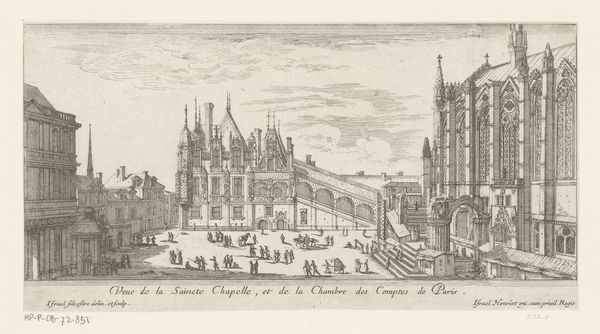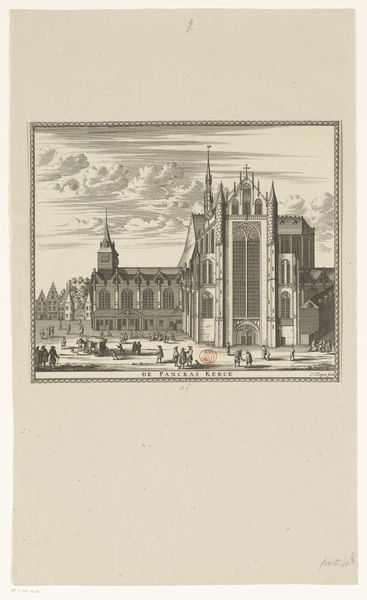
Dimensions: 149 × 170 mm (image/plate); 154 × 172 mm (sheet)
Copyright: Public Domain
Curator: Welcome. We’re looking at Donald Shaw MacLaughlan’s 1903 etching, "St. Ouen, Rouen," now residing here at The Art Institute of Chicago. Editor: It's a compelling study in contrasts. The cathedral, grand and imposing, looms over the figures below, creating a palpable sense of scale and perhaps even a commentary on societal hierarchies of the time. Curator: Absolutely. MacLaughlan's choice of subject matter aligns with the broader interest in medieval architecture during the late 19th and early 20th centuries, a period marked by burgeoning nationalism and the search for cultural identity in national historical narratives. The gothic style embodied in the church speaks to a longing for an imagined past, devoid of modernity's alienation. Editor: Visually, it seems very much about the persistence of sacred spaces as well. Look at the etching technique itself: the artist's hand so deliberately recreating stone and light, which mirrors the builders and craftsmen over centuries who built this great cathedral—all attempting to make something timeless that touches something fundamental in humanity. Curator: Consider, too, the positionality of the artist. By placing the viewer at a distance, amidst the bustle of everyday life, MacLaughlan encourages reflection on the institution’s power within the modern world. Who benefits from such grandeur? Who is excluded? And, considering the date, how did such grand architectures inform colonial power across Europe? Editor: Yes, the artist doesn’t quite flatten it out with even lighting as much as create shadows and lines in concentrated areas of symbolic importance—which echoes that power dynamic again. It has the visual language of something hallowed in collective memory. Curator: And beyond that language, it serves to raise contemporary concerns about the legacies of institutional power and architectural form in shaping social relations today. We must continue asking whose stories are told and whose are suppressed within these visual landscapes. Editor: I agree; in a way, the symbols and spaces persist—but it’s our task to keep critically reflecting on the human imprint we want to leave for centuries to come.
Comments
No comments
Be the first to comment and join the conversation on the ultimate creative platform.
